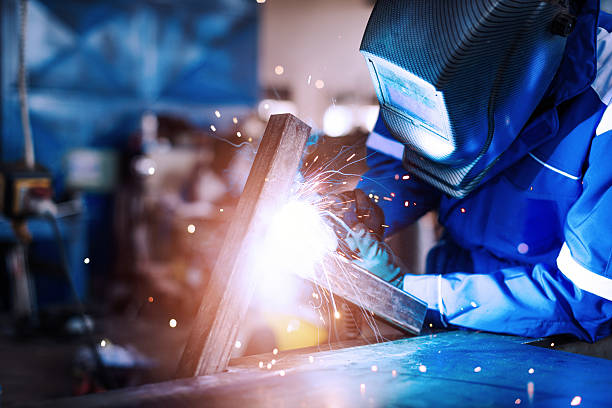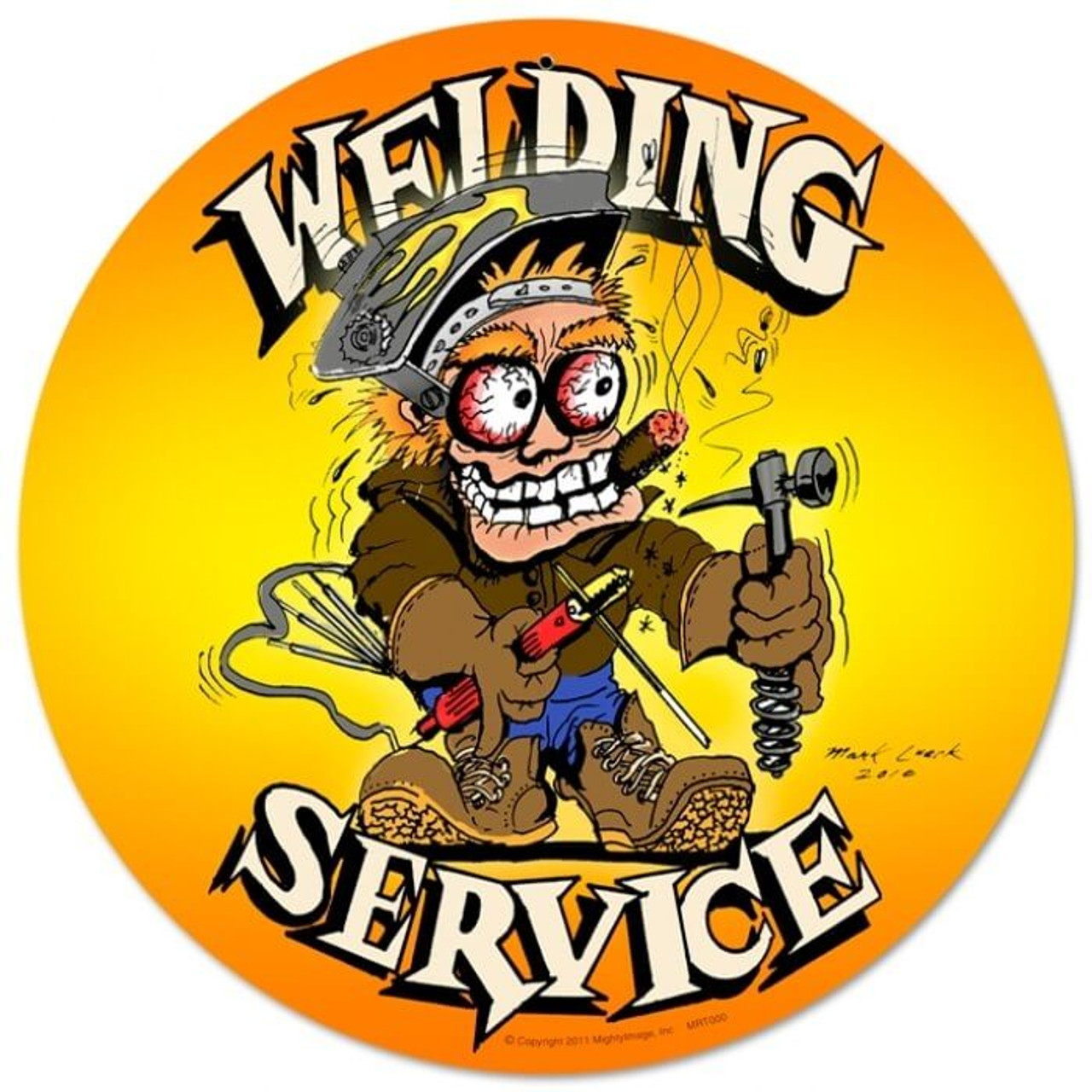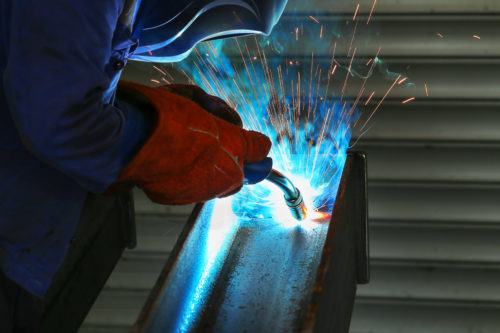In-depth Welding Inspection Service for High-Performance Welding
In-depth Welding Inspection Service for High-Performance Welding
Blog Article
Comprehending the Different Types of Welding Techniques and Providers Available

Introduction of Welding Techniques
Welding methods encompass a varied variety of methods made use of to sign up with materials together completely. One common approach is arc welding, which entails developing an electric arc between an electrode and the base material to thaw and fuse them together. This technique is versatile and can be made use of with various steels, making it one of the most extensively used welding procedures.

Additionally, TIG welding, or Gas Tungsten Arc Welding (GTAW), is a exact and tidy welding technique that makes use of a non-consumable tungsten electrode to create the weld. TIG welding is typically utilized for thinner products and provides exceptional control over the welding procedure. Generally, recognizing these various welding methods is important for picking the most suitable technique for different jobs.
Generally Utilized Welding Methods
A series of generally used techniques are employed in the field of welding to properly join materials together. One of the most widely used strategies is Gas Metal Arc Welding (GMAW), likewise referred to as MIG welding. This technique utilizes a cord electrode that is fed via a welding gun, along with a securing gas to protect the weld from contaminants in the air. An additional typical method is Protected Metal Arc Welding (SMAW), or stick welding, which utilizes a flux-coated electrode to develop the weld. Tungsten Inert Gas (TIG) welding is preferred for its accuracy and versatility, utilizing a non-consumable tungsten electrode to generate the weld. Flux-Cored Arc Welding (FCAW) is typically made use of in industrial setups as a result of its high welding speed and mobility. Furthermore, Immersed Arc Welding (SAW) is ideal for creating deep welds on thick materials. These commonly utilized welding techniques satisfy different requirements and products, providing alternatives for numerous welding applications.
Advanced Welding Solutions
Structure upon the foundation of generally used welding methods, the world of advanced welding solutions incorporates sophisticated techniques and technologies that push the borders of accuracy and efficiency in product joining procedures. Advanced welding services commonly entail specialized methods such as laser welding, electron beam of light welding, and friction mix welding. Laser welding utilizes an extremely concentrated beam to precisely sign up with steels with very imp source little heat-affected areas, making it excellent for complicated or delicate elements. Electron light beam welding, on the other hand, uses a high-velocity electron beam of light to produce deep weld infiltrations in materials like aerospace alloys or dissimilar metals. Friction stir welding, a solid-state joining procedure, enables the welding of products that are challenging to fuse utilizing standard techniques, like aluminum and copper. These innovative strategies offer boosted control over the welding procedure, leading to more powerful, much more resilient welds with decreased distortion and improved overall high quality.
Specialized Welding Methods

An additional specialized welding technique is laser beam of light welding, where an extremely concentrated beam is used to sign up with steels with minimal heat-affected areas and distortion. This approach is generally used in industries requiring high accuracy and tidiness, such as electronic devices and clinical gadget manufacturing. Furthermore, explosive welding is a special method that uses controlled nitroglycerins to bond different metals with each other, producing solid and reputable joints. These specialized welding methods showcase the variety and advancement existing in the area of welding, supplying options for a vast array of industrial applications.

Selecting the Right Welding Process
Selecting the ideal welding procedure is vital in accomplishing optimal lead to metal construction and joining operations. With different welding methods available, it is critical to consider variables such as the sort of steel, density, joint design, and preferred end result when picking the appropriate welding procedure - Welding Inspection Service. Amongst the typical welding methods are Gas Steel Arc Welding (GMAW), Shielded Steel Arc Welding (SMAW), Gas Tungsten Arc Welding (GTAW), and Flux-Cored Arc Welding (FCAW) GMAW, likewise understood as MIG welding, appropriates for welding slim to thick metals and is functional in different settings. On the other hand, SMAW, or stick welding, is a trustworthy approach for exterior and field welding as a result of its mobility and simplicity. GTAW, or TIG welding, is suitable for welding slim materials and provides accurate and top article high-grade welds. FCAW is favored for welding thick products and is known for its high welding rates. Recognizing the characteristics of each welding procedure is necessary in selecting one of the most appropriate technique for a certain welding project.
Conclusion
To conclude, recognizing the numerous sorts of welding methods and solutions available is crucial for picking the right approach for a particular project. By knowing the generally used welding approaches, advanced welding solutions, and specialized techniques, people can make educated decisions to guarantee the success of their welding jobs. It is essential to think about aspects such as materials, project requirements, and spending plan when picking one of the most suitable welding procedure.
From traditional approaches like stick welding to innovative procedures such as laser welding, the world of welding uses a wide range of options for joining steels with each other.Additionally, TIG welding, or Gas Tungsten Arc Welding (GTAW), is a specific and clean welding approach that uses a non-consumable tungsten electrode to develop the weld. Advanced welding solutions typically include specialized techniques such as laser welding, electron light beam welding, and friction mix welding. Amongst the usual welding approaches are Gas Metal Arc Welding (GMAW), Shielded Metal Arc Welding (SMAW), Gas Tungsten Arc Welding (GTAW), and Flux-Cored Arc Welding (FCAW) By being conscious of the typically made use of welding methods, advanced welding services, and specialized strategies, people can make educated decisions to make certain the success of their welding tasks.
Report this page